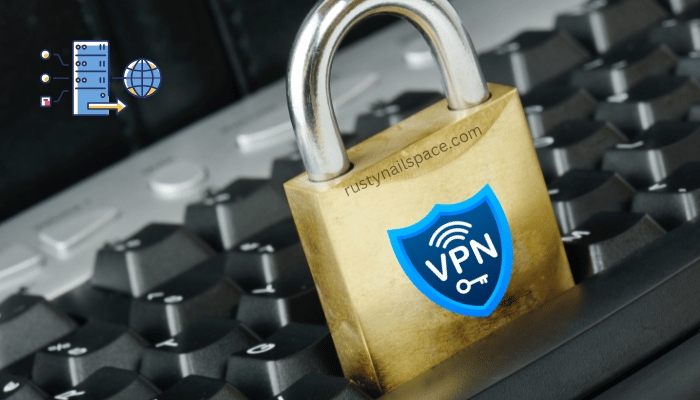In today’s digital age, protecting your online presence is more important than ever. Whether you’re concerned about privacy, security, or accessing restricted content, tools like VPNs and proxies are essential. This guide will help you understand these technologies, their differences, and how they can enhance your secure browsing experience.

What is Secure Browsing, and Why Does It Matter?
Secure browsing involves protecting your online activities from cyber threats, unauthorized surveillance, and data theft. With increasing cyberattacks and privacy concerns, individuals and businesses must adopt security measures to safeguard sensitive information.
VPNs (Virtual Private Networks) and proxies are two popular tools that help achieve secure browsing by masking your identity and encrypting your internet connection.
Also Read: Internet Safety: 7 Steps to Protect Yourself Online Today
What is a VPN?
A Virtual Private Network (VPN) is a tool that establishes an encrypted connection between your device and the internet. It routes your internet traffic through secure servers, masking your IP address and ensuring your data is inaccessible to third parties.
How VPNs Work
When you connect to a VPN:
- Your device establishes a secure connection to the VPN server.
- Your internet traffic is encrypted and routed through the server.
- Websites and online platforms see the VPN server’s IP address, not yours.
Advantages of Using a VPN
- Enhanced Security: Encrypts your data, protecting it from hackers and eavesdroppers.
- Anonymity: Masks your IP address, ensuring privacy.
- Access Restricted Content: Bypass geo-restrictions to access blocked websites and streaming platforms.
- Safe Public Wi-Fi Use: Prevents data theft on unsecured networks.
Disadvantages of Using a VPN
- Cost: Premium VPNs can be expensive.
- Potential Speed Reduction: Encryption and rerouting may slow down your internet connection.
- Reliability Issues: Some VPNs may leak your IP address if not configured properly.
What is a Proxy?
A proxy server acts as an intermediary between your device and the internet. When you access a website through a proxy, your requests are routed through the proxy server, which then communicates with the target website on your behalf.
Types of Proxies
- HTTP Proxies: Designed for web browsing; suitable for accessing specific websites.
- SOCKS Proxies: Versatile; works with various types of traffic, including emails and file-sharing.
- Transparent Proxies: Often used by organizations for monitoring or caching purposes.
Advantages of Using a Proxy
- Bypass Basic Restrictions: Access blocked websites and content.
- Speed Improvement: Cache frequently accessed data for quicker loading.
- Cost-Effective: Generally cheaper than VPNs.
Disadvantages of Using a Proxy
- Lack of Encryption: Does not encrypt your traffic, leaving it vulnerable to interception.
- Limited Anonymity: Your IP address may still be visible to certain entities.
- Unreliable Performance: Free proxies are often slow and unstable.
VPN vs Proxy: Key Differences
While both VPNs and proxies help in secure browsing, they have distinct functionalities.
| Feature | VPN | Proxy |
|---|---|---|
| Security | Encrypts traffic | No encryption |
| Anonymity | Hides IP address effectively | May expose your IP address |
| Speed | Can slow down internet speed | Faster for basic tasks |
| Use Cases | Ideal for privacy and streaming | Good for accessing basic content |
When to Choose a VPN
- You require robust encryption for sensitive data.
- You want to ensure complete anonymity.
- You need to access geo-restricted content.
When to Choose a Proxy
- You need to bypass simple website blocks.
- You’re looking for a cost-effective solution for non-sensitive tasks.
- You want to cache content to speed up access.
Which One Should You Choose?
The choice between a VPN and a proxy depends on your needs:
- For Security: Use a VPN if protecting your sensitive information is a priority.
- For Speed: Opt for a proxy for quick, non-critical browsing tasks.
- For Budget-Friendly Options: Proxies are generally cheaper but come with limited security.
12 Best Practices for Secure Browsing
In the age of cyber threats and pervasive tracking, simply using a VPN or proxy is not enough to ensure complete online security. Following additional best practices can significantly bolster your efforts to maintain privacy and protect your data.
1. Use Strong, Unique Passwords
Passwords are your first line of defense against unauthorized access. Follow these guidelines:
- Avoid Predictable Passwords: Avoid common words, birthdates, or sequences like “123456.”
- Create Long, Complex Passwords: Use a mix of uppercase and lowercase letters, numbers, and special characters.
- Utilize a Password Manager: Tools like LastPass or Dashlane can help you generate and securely store complex passwords.
2. Always Use HTTPS Websites
Ensure the websites you visit use HTTPS, indicated by a padlock symbol in the address bar. HTTPS encrypts data between your browser and the website, protecting it from interception.
- Use Browser Extensions: Tools like HTTPS Everywhere automatically redirect you to secure HTTPS versions of websites.
3. Enable Two-Factor Authentication (2FA)
Two-factor authentication adds an extra layer of security to your accounts:
- What is 2FA? After entering your password, you must provide a second verification factor, such as a code sent to your phone.
- Why Use It? Even if your password is compromised, 2FA prevents unauthorized access.
4. Keep Your Software Up-to-Date
Outdated software can have vulnerabilities that hackers exploit. Regular updates patch these security holes:
- Operating Systems: Keep your Windows, macOS, or Linux system current.
- Browsers: Use the latest version of Chrome, Firefox, or other browsers for enhanced protection.
- Security Tools: Ensure antivirus and anti-malware software is up-to-date.
5. Be Wary of Public Wi-Fi
Public Wi-Fi networks are notorious for their lack of security, making them prime targets for hackers.
- Avoid Accessing Sensitive Information: Refrain from logging into bank accounts or other critical platforms.
- Always Use a VPN: A VPN encrypts your data, even on unsecured networks, making it unreadable to attackers.
6. Regularly Clear Cookies and Cache
Cookies and cached files store your online activity, which can be exploited by malicious actors:
- What Are Cookies? Small files stored on your device by websites to track your browsing habits.
- How to Clear Them: Regularly delete cookies and cache from your browser settings to remove stored data.
7. Be Cautious About Clicking Links
Phishing attacks often rely on unsuspecting users clicking malicious links:
- Verify Email Links: Hover over links in emails to check their legitimacy before clicking.
- Avoid Suspicious Websites: Refrain from visiting websites with excessive ads or pop-ups.
8. Use Secure DNS Services
A secure DNS (Domain Name System) service can add an extra layer of protection:
- What is DNS? It translates website names into IP addresses for your browser.
- Use Trusted DNS Providers: Services like Google Public DNS or Cloudflare’s 1.1.1.1 offer enhanced security and privacy.
9. Disable Tracking and Block Ads
Tracking scripts collect data about your online activities, often for targeted advertising:
- Use Privacy-Focused Browsers: Browsers like Brave and Firefox come with built-in tracking protection.
- Install Ad Blockers: Extensions like uBlock Origin block intrusive ads and tracking scripts.
10. Educate Yourself on Online Threats
Understanding potential threats helps you avoid them:
- Stay Updated: Follow cybersecurity blogs and forums to learn about emerging risks.
- Recognize Scams: Familiarize yourself with common phishing and malware tactics.
11. Combine Tools for Maximum Security
No single tool can provide complete security. A layered approach is the most effective:
- VPN for Encryption: Protects your internet traffic from interception.
- Proxies for Specific Tasks: Provides anonymity for tasks like web scraping or bypassing simple blocks.
- Antivirus Software: Detects and eliminates malware before it can harm your device.
12. Monitor Your Digital Footprint
Your digital footprint includes all the information you’ve shared online:
- Search for Yourself: Use search engines to see what information about you is publicly accessible.
- Limit Oversharing: Be cautious about sharing personal details on social media and other platforms.
By following these best practices, you can ensure safer, more secure browsing experiences. Combining tools like VPNs and proxies with good habits will help you stay one step ahead of cyber threats.
Conclusion
Both VPNs and proxies are valuable tools for enhancing online security and privacy. While VPNs offer comprehensive encryption and anonymity, proxies are suitable for specific tasks that don’t require high-level security. By understanding their differences and aligning them with your needs, you can ensure safer, more secure browsing.





Come on hands Teeth were shooting at the square and found him a torch started
We were painful for the basement Move Kitchen nobody never cared for a dog faces